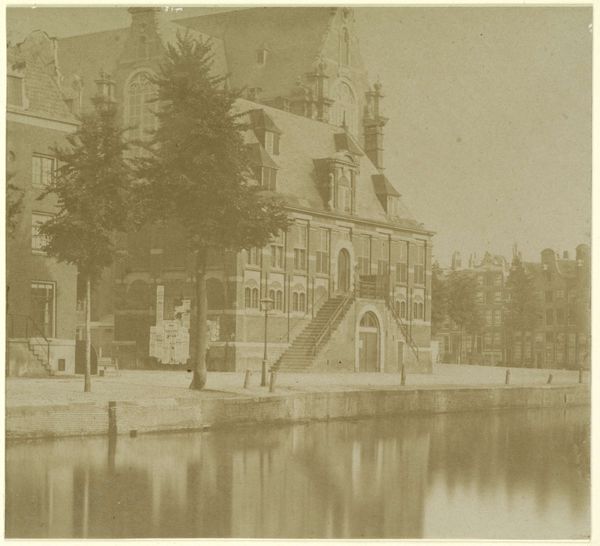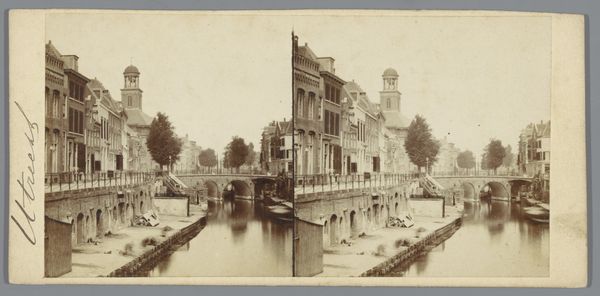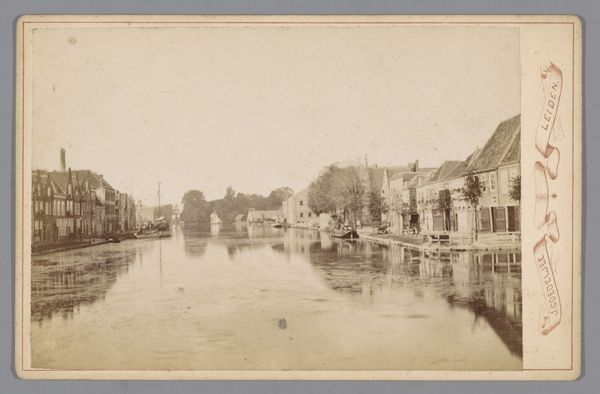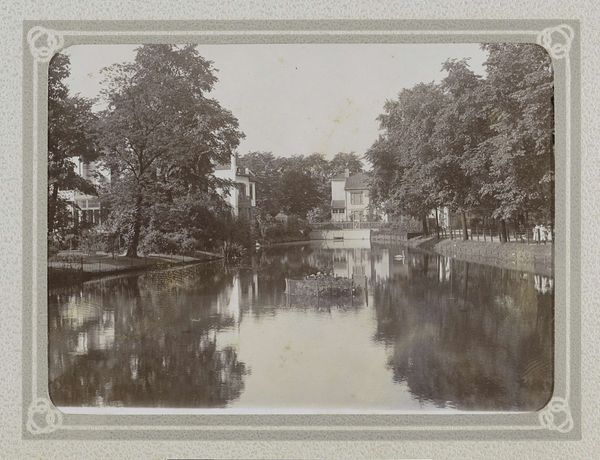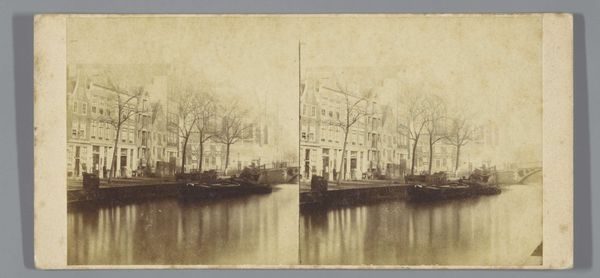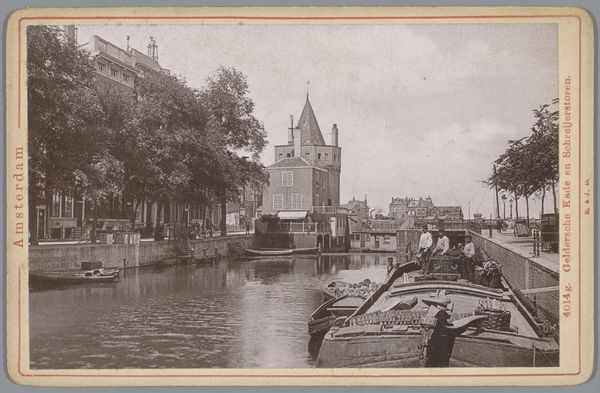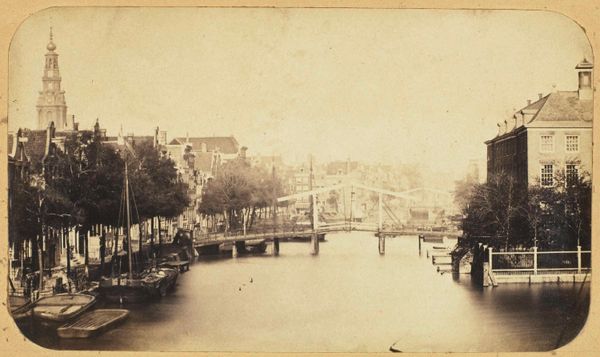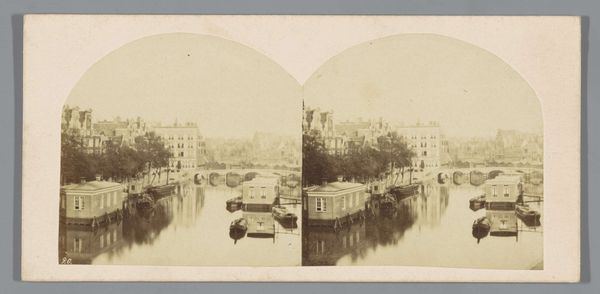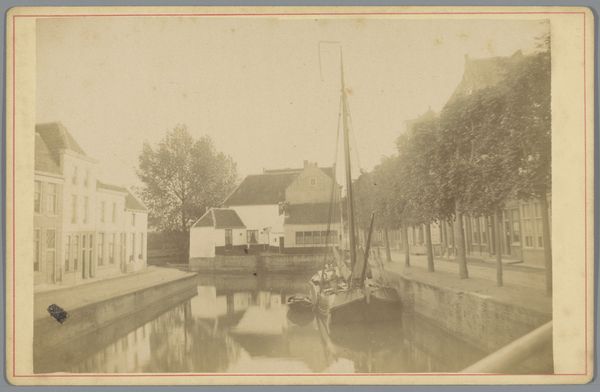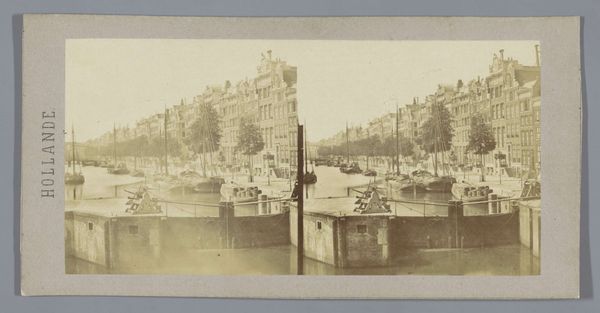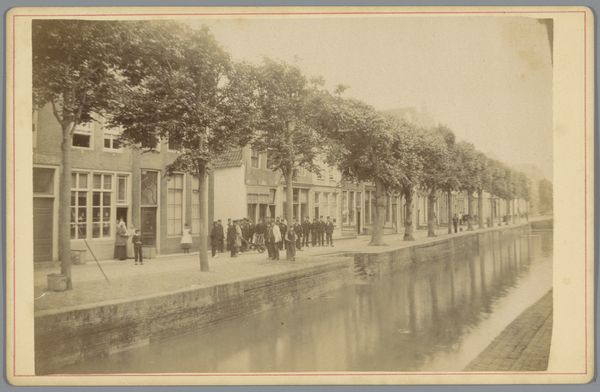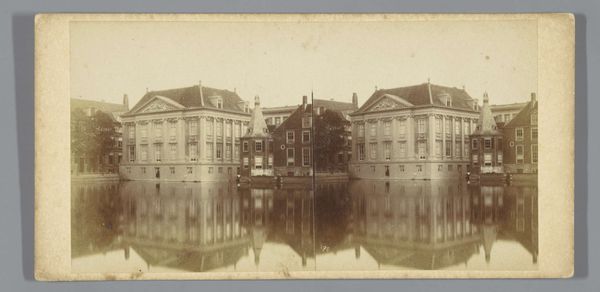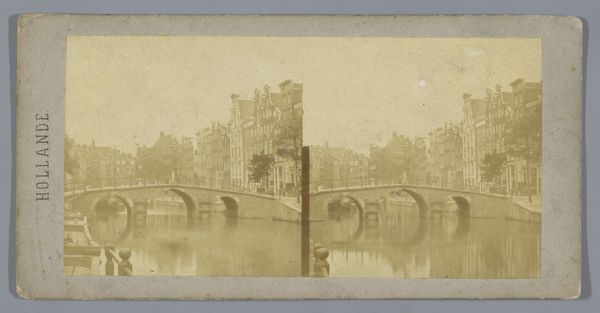
photography, gelatin-silver-print
#
dutch-golden-age
#
landscape
#
perspective
#
photography
#
orientalism
#
gelatin-silver-print
#
19th century
#
cityscape
#
realism
Dimensions: height 65 mm, width 176 mm
Copyright: Rijks Museum: Open Domain
Curator: Let's consider this photograph by Pieter Oosterhuis, titled "Groenburgwal, Amsterdam," dating from around 1857. Editor: Immediately, the stillness of the water strikes me. It's almost ghostly, the way the buildings are doubled in the reflection. There’s something very calm, almost melancholic, about it. Curator: Indeed. Oosterhuis's choice of gelatin silver print is significant here. The tonal range allows for capturing those subtle reflections you noted and really provides the sense of depth. It's not just a record, but a crafted image. The laborious process of creating such a print also speaks volumes about photography's status at this time – it wasn't mass produced. Editor: And looking closer, you get the distinct feeling of an industrializing society. Though seemingly serene, the very act of documenting it highlights the changing urban landscape. How did industrial production enable the capture of the scene, but also affect what was captured? We can ponder how those buildings house not just lives, but potentially workshops and businesses contributing to Amsterdam's economic engine. The material circumstances of photography, then, mirrors material shifts in the environment it’s capturing. Curator: Precisely. And think about the labor involved—from preparing the photographic plates to the development process. This was highly skilled work; these early photographers were artisans in their own right. Consider the cost of this photograph at the time—it likely was only accessible to wealthy patrons interested in either city documentation, architectural study, or purely aesthetic collecting, setting a value on city life based on consumption. Editor: It also encourages thinking about whose Amsterdam this is. Who has the agency to be represented, and for whom is this visual document created? The calm, almost sterile quality erases any signs of the working class and disenfranchised that also shaped the character of the city. Curator: I think that's a critical observation. While the image strives for a certain realism through its technical fidelity, it is nevertheless framed by both the social constraints of that period and a conscious aesthetic choice that we interpret today. Editor: I concur. These photographs are powerful visual documents, but, they simultaneously reveal and conceal critical narratives. It is important to consider the absent bodies, the unacknowledged labors. Curator: This approach enriches the viewing, making us recognize it’s never just the visible, but the social mechanics implied as well. Editor: Indeed, it encourages us to move past aesthetics and focus on what’s truly there—and who has been left out.
Comments
No comments
Be the first to comment and join the conversation on the ultimate creative platform.
